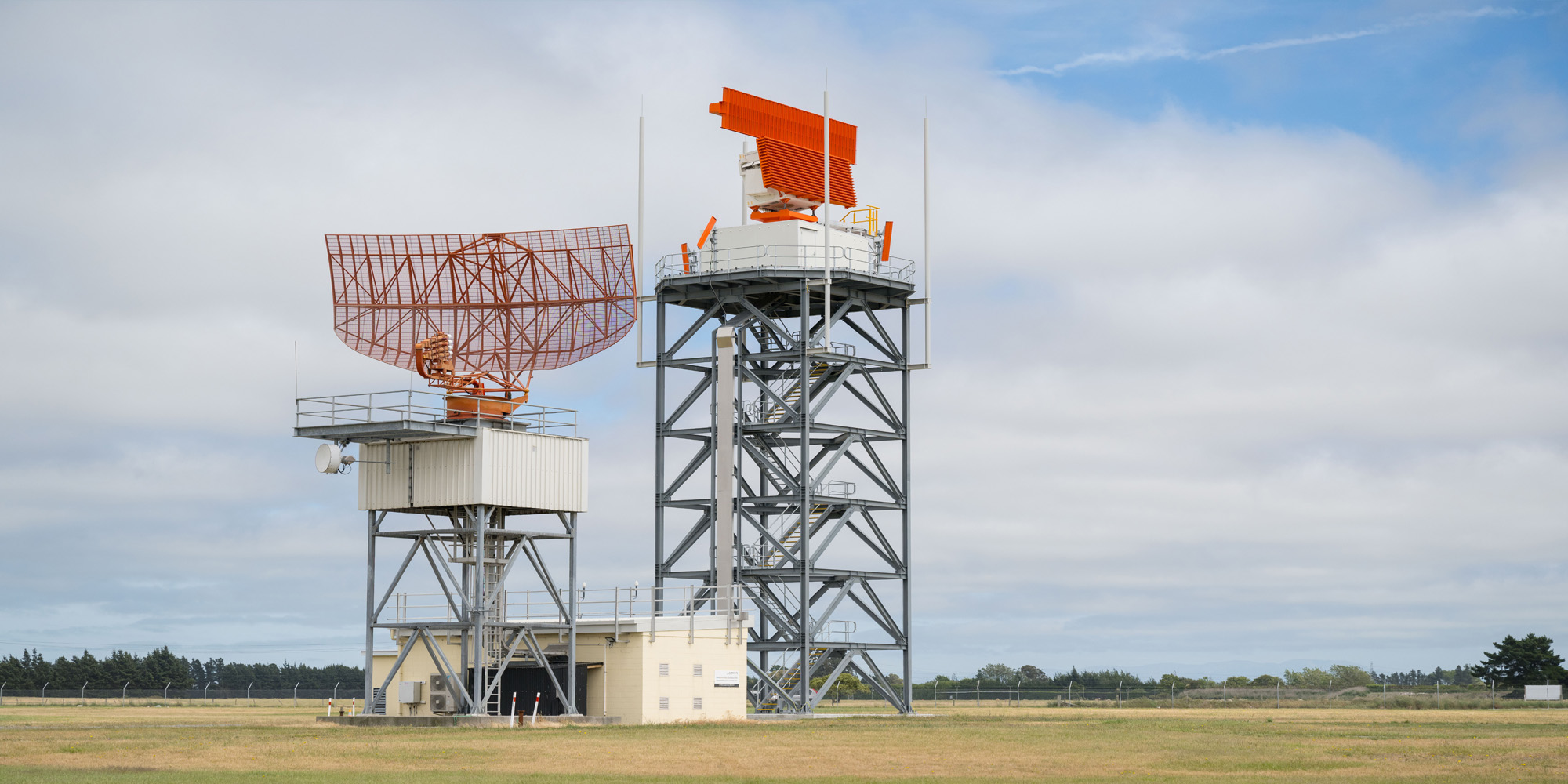
Phil Rakena
By Phil Rakena, Operations Development Specialist, ATS Future Services, Airways New Zealand.
The next generation of surveillance technology
Pilots flying into Christchurch aerodrome may have spotted a new radar tower or noticed radar outage NOTAMs. It’s all part of the next generation of surveillance technology for air traffic control.
The two arrays on top of the tower are for new Secondary Surveillance Radar (SSR) and Primary Surveillance Radar (PSR) systems, due to begin operating this year. They’re being configured over the first half of 2024, and you may see related NOTAMs and AIP Supplements on PSR outages.
At Christchurch aerodrome, the new Indra radar sits atop the right-hand tower, with Secondary Surveillance Radar (SSR) antenna above the Primary Surveillance Radar (PSR). The left-hand tower houses the existing Thales PSR. An existing Thales SSR is located at Cass Peak in the Port Hills.

Photo courtesy of Airways New Zealand and Neil Macbeth
SSR is now a contingency for Airways New Zealand’s main surveillance technology, Automatic Dependent Surveillance-Broadcast (ADS-B). SSR ensures resilient surveillance coverage between Auckland, Wellington, and Christchurch.
PSR provides a safety net in high-density airspace, enabling air traffic controllers to identify aircraft without a transponder.
Air Traffic Services (ATS) staff use PSR to assist an aircraft which has suffered a transponder or GNSS (global navigation satellite system) equipment failure, or been given special permission to operate without a transponder. They may also use PSR to identify an aircraft without a transponder, which has entered controlled airspace without authorisation.
The new PSR and SSR systems from supplier Indra are an upgrade that will replace the existing Thales radars, which have given excellent service but are nearing the end of their lives.
Christchurch, Wellington, Auckland
Christchurch is the first centre to have new PSR and SSR systems installed. These are located together on an 18-metre tower slightly west of the old PSR, and they are now being readied for operation. Planning is under way for the installations in Wellington and Auckland.
The new PSR system will increase radar range from 80NM to 120NM. With a 50% increase in range, the coverage area will more than double.
The new SSR system will provide contingency surveillance for flights around Auckland, Wellington, and Christchurch in the unlikely event of an ADS-B or GNSS outage.
Unlike Christchurch’s current Thales SSR at Cass Peak in the Port Hills, the new Indra radar will not require the protection of a radome, a golf ball-like cover. The new system is rated for winds of up to 200kph, and is well clear of the sea and corrosive salt air.
Expect the new, co-located PSR and SSR systems to be operational at Christchurch aerodrome by mid-2024, with the PSR-SSR systems at Hawkins Hill in Wellington being operational in early 2025. In 2026, the new PSR-SSR will be operational at Rua-ō-te-Whenua in Auckland’s Waitākere Ranges, replacing the PSR at Auckland aerodrome.
Keep your eyes peeled
Keep an eye out for AIP Supplements and NOTAMs, with more information about surveillance outages to allow the safe installation and testing of the new systems.
Once they’re operational, updated surveillance coverage maps will be published in the Aeronautical Information Publication New Zealand (AIPNZ)(external link)
More information
Automatic Dependent Surveillance-Broadcast (ADS-B): Air traffic surveillance includes position information based on the global navigation satellite system (GNSS). It has increased surveillance coverage by 40 percent across the country since 31 December 2022, when ADS-B OUT equipment became mandatory for aircraft operating in domestic controlled airspace.
Primary Surveillance Radar (PSR) was developed during World War II, and relies on transmissions reflecting off the body of an aircraft. The antenna position and time taken for a RAdio signal to return from a target is used to determine aircraft Direction And Range (RADAR). The Indra PSR relies on the same basic principles, but uses advanced beam steering technology and digital processing to optimise radar performance for the surrounding environment.
Secondary Surveillance Radar (SSR) arrived in the 1990s and provides line-of-sight coverage out to 250NM. It doesn’t rely on reflected signals – instead, an aircraft transponder sends a signal that includes a discrete code and altitude. In the case of Enhanced Mode-S, it can also provide data including aircraft heading, airspeed, and pilot-selected altitude.
